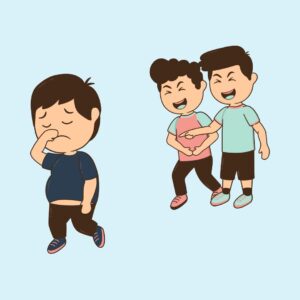Finding the Words: Bibliotherapy & Diversity
How does one “teach” others to be respectable citizens who appreciate and even celebrate the unique qualities of others? Is it possible to teach that in a lesson? Most would argue that being a model of such behavior is a crucial first step. The way we educators talk about and react to others will have the greatest impact on our youth. They are watching us. They can spot a fake. They will know if we practice what we preach. So, before we even begin trying to teach cultural competency, we have to live it. But, we can do better than live it. We can CELEBRATE it.
Before becoming a school counselor, during my elementary classroom teaching days, I found every chance I could to get excited over unique qualities in students. If a student spoke another language, for example, I would become utterly fascinated with the idea that they could do something so special. We would make a fun game of it I wanted every child to feel completely special for having something that was unique to them. It could be as little as gurgling their milk to the tune of the Star Spangled Banner during snack time. When we show children that we can differ on so many levels, then skin color, culture, and socioeconomic status become just a drop in the bucket in the sea of things that make us unique.
In addition to modeling an excited attitude towards uniqueness, bibliotherapy is another great way to encourage cultural competence. I like to find stories of how others were empowered to be proud of their unique qualities. Using well chosen books to teach a lesson can be very helpful in explaining these topics that are hard to define in one simple definition. A story can truly tell a thousand words for you. Other reasons why I love using books to teach diversity is that these stories tend to normalize the feelings of the readers and offer hope. All students can relate in some way to stories of feeling different or left out. Books offer inspiration, guidance, and a light at the end of the tunnel.
There’s nothing I love better than teaming up with a teacher to intertwine our lessons and use time more wisely. I would recommend getting a teacher on board to read a particular book with their class(es) that would be useful for their lessons but at the same time would provide an introductory or background story for one of your lessons. With the limited amount of classroom time that many of us face, this can be a huge benefit to your comprehensive school counseling program. We are fortunate enough at our school to have an administrative team that is supportive of our efforts. Last year, our assistant principal had the wonderful idea of having the 6th grade students read Wonder with their Language Arts teachers to serve the dual purpose of academic and character education. Now that’s a win win situation!
Scholastic recommends books such as All Kinds of Families by Mary Ann Hoberman, I Have a Dream by Martin Luther King, Jr, It’s a Small World by Disney Press, I, Too, Am America by Langston Hughes, Mostly Monsterly by Tammi Sauer, Wonder by R.J. Palacio and Temple Grandin: How the Girl Who Loved Cows Embraced Autism and Changed the World by Sy Montgomery.
There are also dozens of lessons for all age groups on Teachers Pay Teachers to discuss related topics in a safe, comfortable setting. The Inspired Counselor has a companion lesson for the book The Crayon Box That Talked. (Pre-K -2nd grade) Counselor Keri has an adventurous lap book lesson for grades 4-6. My lesson is geared towards grades 5-9 and explores how to celebrate differences and break free of stereotypes.
With so many choices, I’d love to know your favorite book or lesson for discussing cultural competency.
Leave a comment with your tried and true tips!
– The Counseling Teacher, Brandy Thompson


















